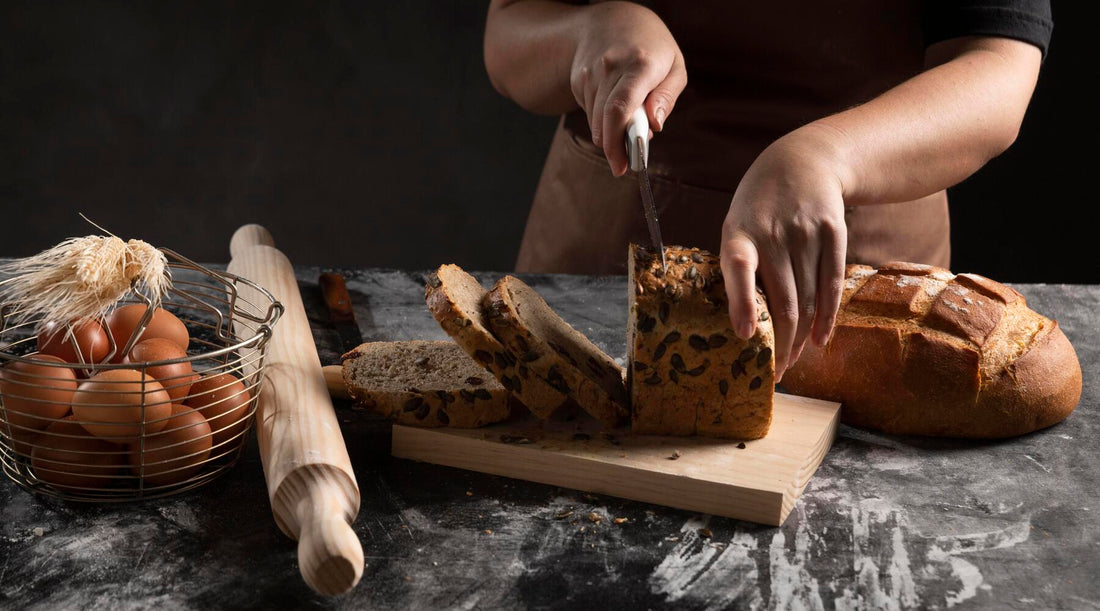Beginner’s Guide: How to Start a Home Bakery Business

There's something uniquely magical about turning your passion for baking into a thriving home business. Imagine the aroma of freshly baked bread wafting through your home, the joy on customers' faces when they taste your creations, and the satisfaction of being your own boss. Starting a home bakery is more than just mixing ingredients; it's about launching a journey where you blend creativity with entrepreneurship.

Understand Licensing and Legal Requirements
Before you start whipping up delicious treats in your kitchen, it's crucial to understand the legalities involved. Knowing the regulations will not only keep you compliant but also build trust with your customers.
1. Learn about the local laws & regulation
Every region has its own set of rules for home-based businesses. Understanding these local laws is essential to ensure you're operating within legal boundaries. You might need to check zoning laws, health codes, and specific requirements for food businesses. Some areas might require inspections or have limitations on the types of goods you can sell from a home-based kitchen.
2. Register your baking business license
Once you've grasped the local laws, the next step is to register your baking business license. This official document allows you to operate legally and can be obtained from your local government office. The process typically involves filling out forms, paying a fee, and sometimes attending an informational meeting. Having this license legitimizes your business and protects you against potential fines or shutdowns.
3. Get a food handler certification
Safety is paramount when it comes to food. A food handler certification ensures that you understand the basics of food safety and hygiene. The certification course will teach you about proper storage, handling practices, and how to prevent contamination. It's usually a short online course followed by a test. Possessing this certification not only complies with legal requirements but also assures your customers that their health is your priority.
4. Manage bakery taxes
Navigating taxes can be daunting, but it's a critical aspect of running a home bakery business. Managing bakery-specific taxes involves understanding what tax obligations you have, such as sales tax, income tax, and possibly even local business taxes. Consulting with an accountant or using a reliable accounting software can help keep your financial records straight and ensure that you're setting aside enough money to cover your tax liabilities.
*anchor-1
Equipment and Supplies for Your Home Bakery
Starting a home bakery requires some initial investments in equipment and supplies. These tools will not only make your baking more efficient but also help you produce consistent quality products. To set up your home bakery, you'll need a well-organized kitchen space with the right appliances and utensils. Investing in high-quality equipment will save you time and effort in the long run. Let's take a glance of some of the essentials:
- A Standard Kitchen Space
- Food or ingredient storage
- Baking Pans and Sheets
- Measuring Tools
- Mixing Bowls
- Utensils
- CleaningSupplies

Crafting a Solid Business Plan
Creating a solid business plan is the foundation of any successful venture. Decide what goods you want to bake—be it cakes, cookies, or artisanal bread—and think about the scale of your operations. Who are your target customers? Are you catering to local coffee shops, individual clients, or perhaps even online orders?
For example, if you decide to focus on gluten-free desserts for health-conscious consumers, you’ll need to source specialty ingredients and maybe even offer samples at local events to attract your target audience. Knowing your niche helps tailor your marketing efforts and product range.
Pricing Your Baked Goods Competitively
Setting the right price for your baked goods can be challenging but it's crucial for profitability. Take the following three basic rules in mind.
First, calculate your costs. Include every expense from ingredients and packaging to utility bills and labor. Once you have a clear understanding of your total costs, you can determine a base price for each product.
Next, research your competition. Look at what other local bakeries are charging for similar items. This will give you an idea of the market rate and help you position your prices competitively, ensuring you're neither too high nor too low.
Finally, consider your profit margin. Aim for a margin that sustains your business while offering value to your customers. Don’t forget to factor in occasional discounts or promotions, which can attract new customers but still require you to maintain profitability.
Selecting the Perfect Packaging Material
Packaging is more than just a container for your baked goods; it’s part of your brand identity. The right packaging not only keeps your products safe but also enhances their appeal.
-
Bags or boxes
Align with modern consumer values that prioritize sustainability. Opt for materials like kraft paper or biodegradable plastics which are environmentally friendly yet sturdy enough to handle transportation. Consider the type of baked goods you're selling.

For instance, delicate items like pastries or cupcakes might require boxes with inserts to prevent movement and damage during transit. On the other hand, bread loaves or cookies can fit snugly in well-sealed bags that maintain freshness. Customizable options allow you to add a personal touch, such as windows that showcase your delightful creations, adding visual appeal and enticing potential buyers even before they open the package.
-
Stickers or labels
Creative stickers or labels can add a personal touch to your packaging. Use them to showcase your brand name, logo, or even a thank-you note. This small detail can leave a lasting impression on your customers.
Design your stickers to reflect the personality of your home bakery. Bright, colorful designs can create a fun and inviting feel, while elegant, minimalist labels may convey sophistication. You can also include essential information like ingredients, allergens, and expiration dates, all while enhancing your brand’s professional appearance. Some bakeries even use QR codes on labels that direct customers to their website or social media pages, fostering a deeper connection with your customer base.
-
Wrapping paper
Honeycomb wrapping paper is great for mailing baked goods. It adds protection and a decorative touch inside the box, keeping items from shifting or breaking. Made from recycled material, its honeycomb design offers good cushioning without being bulky.
This eco-friendly option matches the homemade feel of your bakery and shows you care about the environment, which many customers appreciate. If your business grows or your baked goods are fragile, this paper can help keep them secure without touching the food directly.
-
Shipping labels
If you’re planning to ship your baked goods, having proper shipping labels is essential. They ensure your packages reach the correct destination and can include tracking information for peace of mind. Custom shipping labels can feature your bakery's branding, making even mailed packages look professional and cohesive. Ensure these labels are weather-resistant to withstand various conditions during transit.
Including tracking numbers on your shipping labels allows customers to monitor their orders, providing transparency and building trust in your delivery process. Clear, legible shipping labels reduce the risk of misdeliveries, ensuring that your delicious treats arrive fresh and intact at their eagerly awaiting destinations.
By carefully selecting and designing your packaging materials, you can significantly enhance the overall experience your customers have with your home bakery. Remember, each element—from the sturdiness of your boxes to the creativity of your labels—plays a role in representing your brand and delighting your customers.
For high-quality stickers or labels, wrapping paper, and shipping labels, you can find a great selection on MUNBYN website. Pair these with their thermal printers, which are easy to use and a fantastic choice for small business owners.
Promotion Strategies for Your Home Bakery
Promoting your home bakery effectively can significantly boost your sales and customer base. Start by creating a strong online presence. Utilize social media platforms like Instagram and Facebook to showcase your products with high-quality images and engaging content. Consider creating a website where customers can place orders and learn more about your business.

Collaborate with local businesses for cross-promotions. For instance, you could partner with a local cafe to supply them with baked goods, helping you reach a broader audience. Hosting tasting events or pop-up shops can also draw in new customers and provide them with an opportunity to try before they buy.
Don’t underestimate the power of word-of-mouth. Encourage satisfied customers to leave reviews and refer friends. Offering a referral discount can incentivize this behavior, turning happy customers into loyal advocates for your brand.
*anchor-2
Final Thoughts
Embarking on the journey of starting a home bakery business is both exciting and rewarding. While there are numerous steps involved—from understanding legal requirements to crafting a business plan and pricing your goods—the outcome of sharing your passion with others makes it all worthwhile. With dedication, creativity, and a sprinkle of entrepreneurial spirit, your home bakery can flourish into a beloved community staple. Now ready, set and bake!




